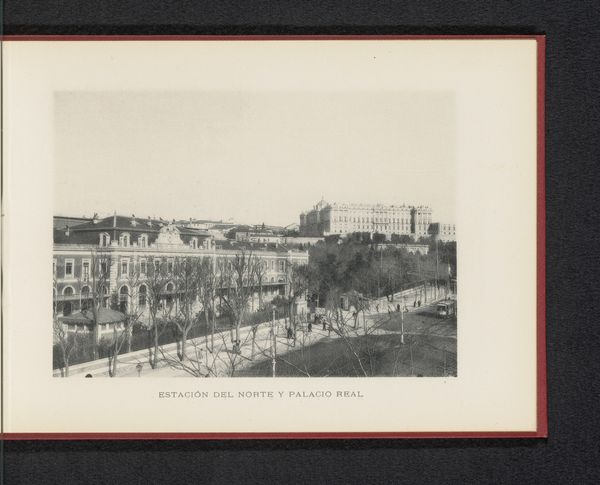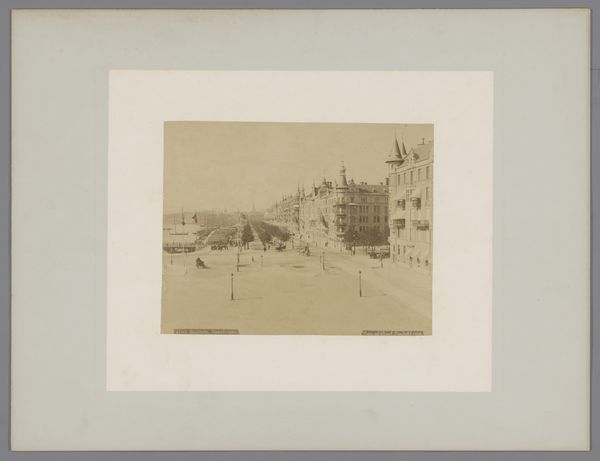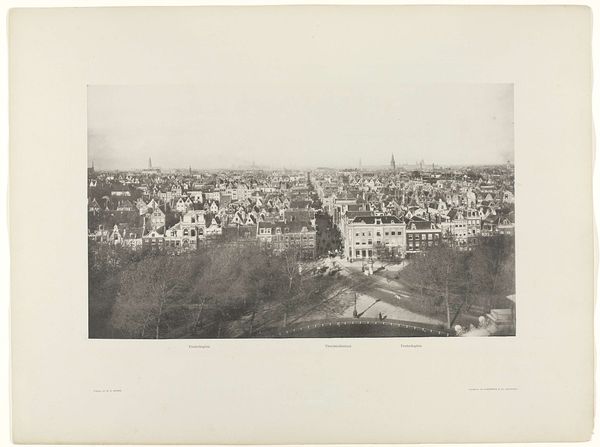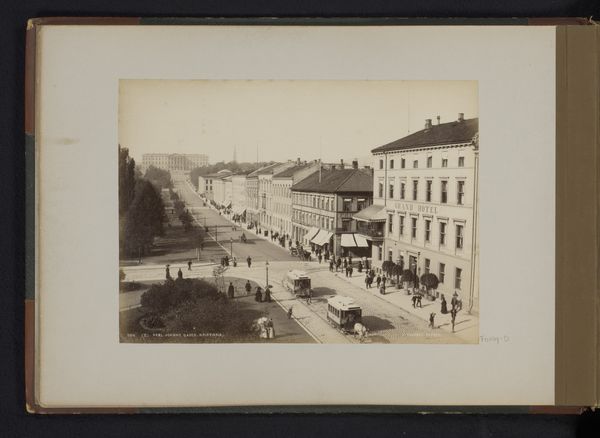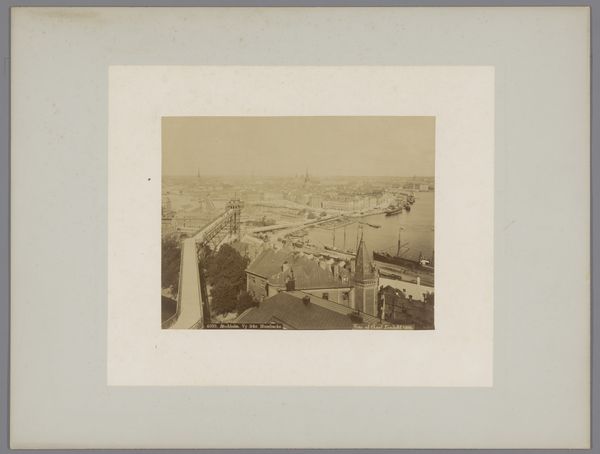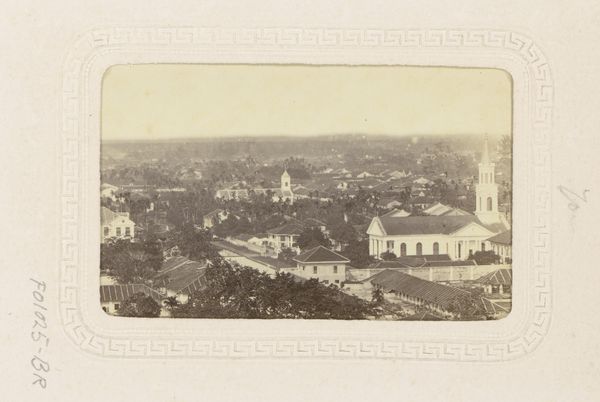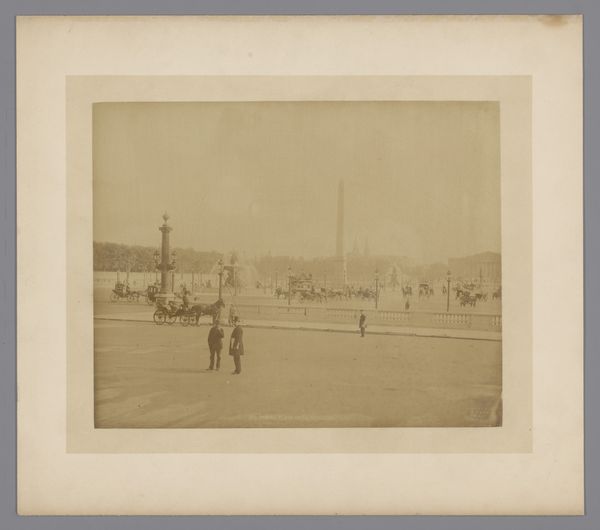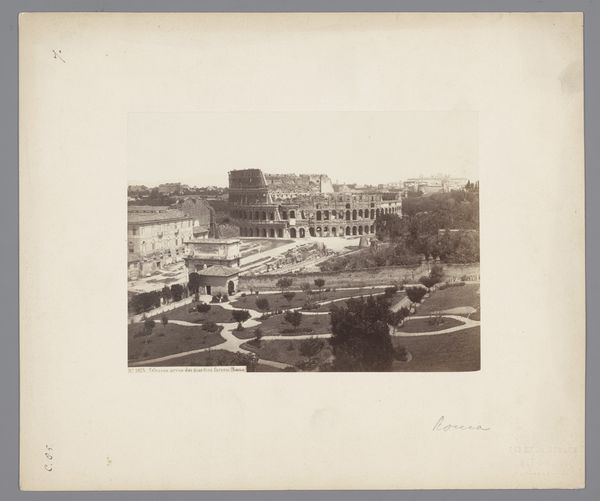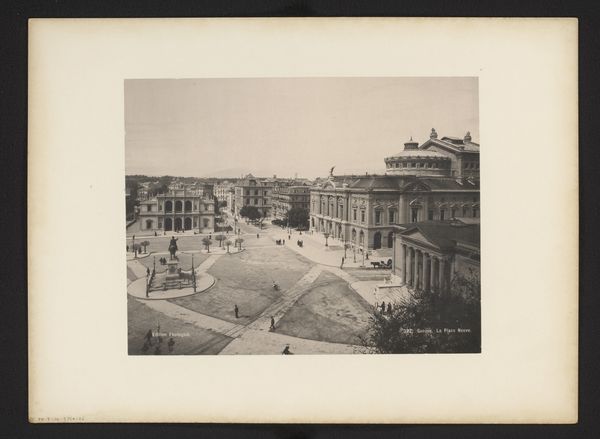
Gezicht op het Kongens Nytorv in Kopenhagen met rechts het Charlottenborg 1880 - 1910
0:00
0:00
print, photography
#
pictorialism
# print
#
street-photography
#
photography
#
cityscape
#
realism
Dimensions: height 235 mm, width 283 mm, height 349 mm, width 454 mm
Copyright: Rijks Museum: Open Domain
Editor: Here we have an early print photograph, likely taken between 1880 and 1910, called "Gezicht op het Kongens Nytorv in Kopenhagen met rechts het Charlottenborg." The tonality is mostly greyscale. What really strikes me is the photographic rendering of bustling cityscape life during that time. How would you interpret its aesthetic impact? Curator: It's primarily through the composition that the artist has structured meaning. Note how the high vantage point compresses depth. This flattening effect enhances the patterns formed by the arrangement of figures and architecture. Consider how this elevated perspective dictates the visual consumption of space, wouldn't you agree? Editor: That's an interesting point. It does flatten it but the buildings recede and create converging lines which lead the eye through the cityscape toward the horizon, and that to me brings a spatial depth. How intentional do you think those receding lines are in the photographic rendering? Curator: Intentionality is perhaps less important than effect. Focus instead on the tonal contrast, and on how the light etches the forms. Observe the sharpness and texture in the foreground slowly dissolve in the soft focus in the distance. What are the spatial effects on the arrangement of forms and textures? Editor: Now I see better that the photographic decision to lose clarity further in the distance helps to define shapes and give texture to the nearby city structures. Are you saying the artist intentionally altered their process to amplify or reduce these effects and thus emphasize the intrinsic picture plane of this photograph? Curator: Precisely. The photograph's illusion is carefully managed in how forms interact and how their tonalities establish contrasts. The artist prompts a reconsideration of seeing. A world seen is less important than how we see that world, as they render the space for us. Editor: Thank you; I've certainly come to see the photograph through a different lens.
Comments
No comments
Be the first to comment and join the conversation on the ultimate creative platform.

